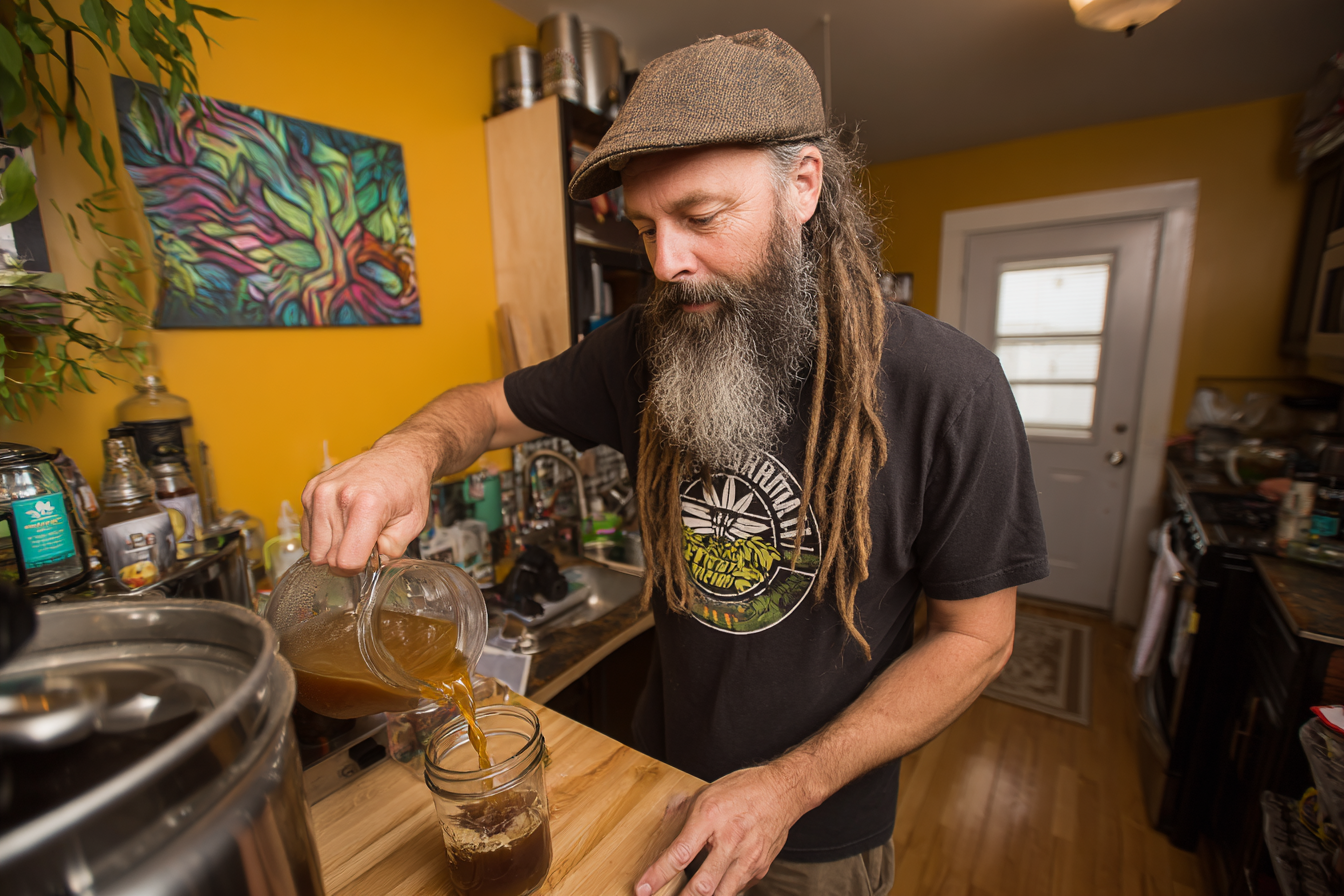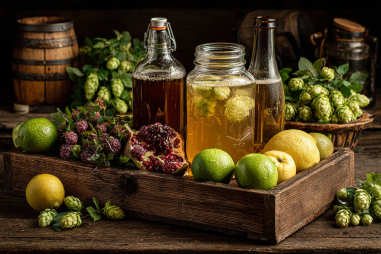Brewing your own American Style Pilsner at home is a rewarding experience that combines precision, creativity, and patience. This beer style, known for its bright, clean, and mildly hoppy profile, is a perfect choice for homebrewers looking to craft a refreshing lager with a distinct twist. Whether you’re a seasoned brewer or just stepping into the world of homebrewing, these tips will guide you through each step to help you achieve a professional-level brew right in your kitchen or garage.
Ingredient Selection and Quality
Ingredients are the foundation of any great beer, and this holds especially true for American Style Pilsners. Selecting high-quality, fresh ingredients will set you on the right path towards an authentic flavor profile and a crisp, refreshing finish.
Start with malt. American Pilsners typically use Pilsner malt as their base, which gives the beer its characteristic light color and subtle sweetness. Consider using lightly kilned malt to maintain a delicate graininess. A small portion of adjunct malt, such as Vienna or Munich malt, can add complexity but should be used sparingly.
Hops are the hallmark of American Pilsners, which differentiate them from traditional European counterparts with their assertive yet balanced hop character. American hop varieties like Cascade, Centennial, or Amarillo provide the bright, citrusy, and floral notes typical of this style. Use them liberally during the boil, and don’t hesitate to add a touch of dry hopping for extra aroma, though moderation is key to maintaining balance.
Don’t overlook the yeast. Choose a clean-fermenting lager yeast strain that can attenuate well without producing off-flavors. Classic options include Wyeast 2124 Bohemian Lager or White Labs WLP830 German Lager. Keeping yeast healthy and active is essential to a clean, crisp pilsner.
Lastly, use soft water with low mineral content, or adjust your water chemistry accordingly. The subtle minerality can accentuate hop bitterness and help the malt flavors shine without becoming harsh.
Step-by-Step Brewing Process Overview
Once you have all your ingredients ready, follow a meticulous brewing process to ensure consistency and quality:
- Mashing: Heat your water to around 150-154°F (65-68°C) and mash your grains for about 60 minutes. This temperature range helps convert starches into fermentable sugars while preserving body.
- Lautering and Sparging: After mashing, separate the wort from the grains and sparge with hot water to extract as much sugar as possible. Be gentle to avoid extracting tannins.
- Boiling: Boil the wort for 60 minutes, adding hops according to your recipe. Typically, hops for bittering are added at the start of the boil, flavor hops mid-boil, and aroma hops near the end.
- Cooling: Rapidly chill the wort to fermentation temperature using a wort chiller. This reduces the risk of contamination and helps proteins settle out.
Following these core steps with attention to timing and temperature control greatly influences the final beer quality.
Fermentation Control Tips
Fermentation is where your beer truly comes to life. For American Style Pilsners, temperature control is critical to prevent off-flavors and maintain clarity.
Lager yeast ferments best in cool conditions—typically between 48-55°F (9-13°C). If you don’t have access to a temperature-controlled fermentation chamber, consider using a fermentation fridge or a swamp cooler setup with frozen water bottles.
Maintain a steady temperature throughout the fermentation period, which usually lasts 2-3 weeks. After primary fermentation, lager your beer at near-freezing temperatures (around 32-36°F or 0-2°C) for several weeks to mellow flavors, enhance clarity, and develop that signature crispness.
Pitch a healthy yeast starter and aerate the wort well before fermentation to promote vigorous and clean yeast activity. Avoid introducing oxygen once fermentation starts, as this can cause stale flavors.
Avoiding Common Mistakes
Brewing a great American Style Pilsner requires diligence, as there are several common pitfalls that can detract from your beer’s quality:
- Skipping proper temperature control: Warm fermentation temps can lead to excessive esters or sulfur compounds, which are unwelcome in this style.
- Using old or poor-quality hops: Stale hops lose their aroma and bitterness, resulting in a flat beer.
- Rushing the lagering process: Skipping or shortening the lagering phase compromises smoothness and clarity.
- Insufficient sanitation: Any contamination from bacteria or wild yeast can spoil the delicate flavor profile.
Paying close attention to these common errors helps ensure a clean, balanced, and bright result.
Tips for Achieving Clarity and Crispness
American Style Pilsners are prized for their sparkling clarity and sharp, refreshing finish. Here’s how to achieve that at home:
- Cold Break and Protein Removal: Chill your wort quickly after boiling to encourage proteins and tannins to precipitate out.
- Use of Irish Moss or Whirlfloc: Adding these clarifying agents during the last 10-15 minutes of the boil helps coagulate haze-forming particles.
- Extended Lagering: The cold maturation phase not only smooths out flavors but also promotes clarity as yeast and particulates settle.
- Gentle Transfer: When moving beer from fermenter to bottling bucket or keg, avoid stirring up sediment.
Combining these techniques results in a beer that looks as sharp as it tastes.
Bottling and Carbonation Advice
Proper bottling and carbonation bring your pilsner to its final harmonious form. Here are some tips:
- Priming Sugar: Measure your priming sugar carefully to avoid over or under carbonation. Aim for medium-high carbonation around 2.5-2.8 volumes of CO2.
- Sanitize Everything: Clean and sanitize bottles, caps, and bottling equipment thoroughly to prevent contamination.
- Temperature for Carbonation: Carbonate your beer at warmer temperatures (around 65-70°F or 18-21°C) to allow yeast activity, then chill before serving.
- Patience: Allow at least two weeks for carbonation to develop fully, ensuring your pilsner is lively and effervescent.
Taking care during this stage preserves the beer’s freshness and enhances mouthfeel.
Troubleshooting Common Issues
Even with the best intentions, issues can arise. Here are some quick fixes for frequent challenges:
- Cloudy beer: Extend your lagering time, check your filtration and fining agents, and make sure to avoid disturbing sediment during transfers.
- Off-flavors (diacetyl, sulfur): Ensure proper yeast health, maintain correct fermentation temperatures, and allow an adequate yeast rest before lagering.
- Low carbonation: Verify priming sugar amounts and that fermentation was complete before bottling.
- Bitter or harsh flavors: Avoid over-boiling hops and make sure to use fresh hops with correct timing during the boil.
Patience and careful observation will help you pinpoint and resolve any issues in future batches.
Savor the Fruits of Your Labor
Crafting your own American Style Pilsner at home is a fulfilling adventure that rewards you with a vibrant, highly drinkable beer. With attention to ingredient quality, precise brewing steps, meticulous fermentation control, and patience during lagering, you’ll be raising a glass to a bright, crisp brew in no time. Remember to take notes with each batch and continually refine your process—homebrewing is as much about learning and tweaking as it is about the final tasty product. Cheers to your brewing success and enjoying every sip of your homemade pilsner!







